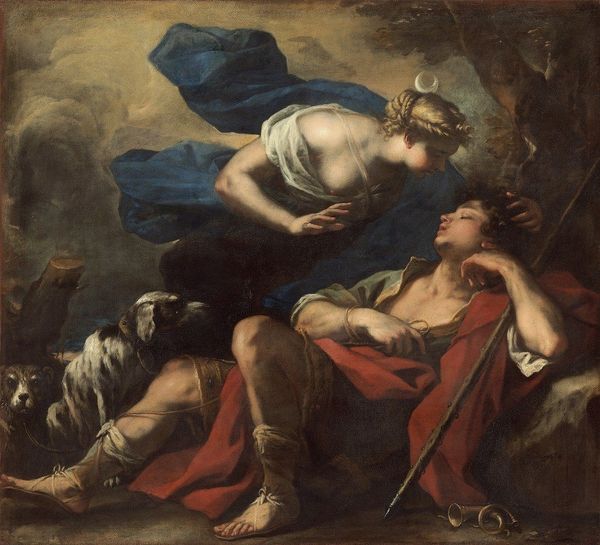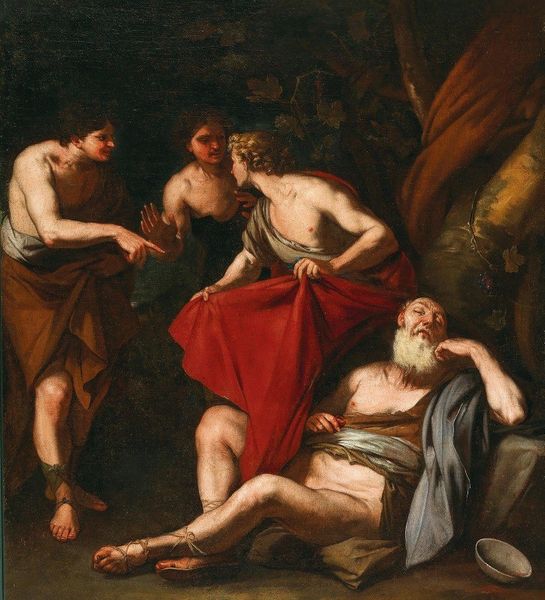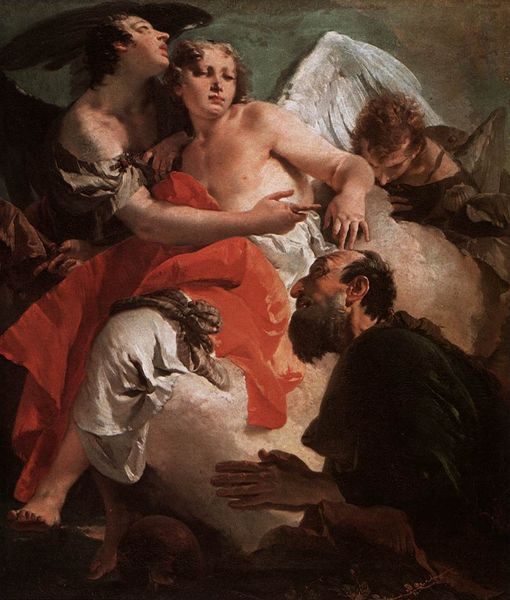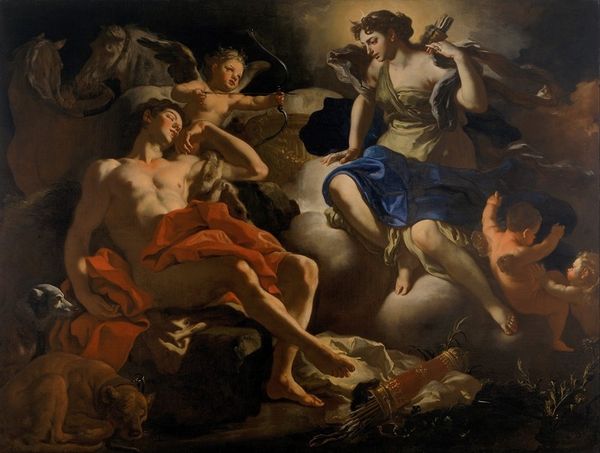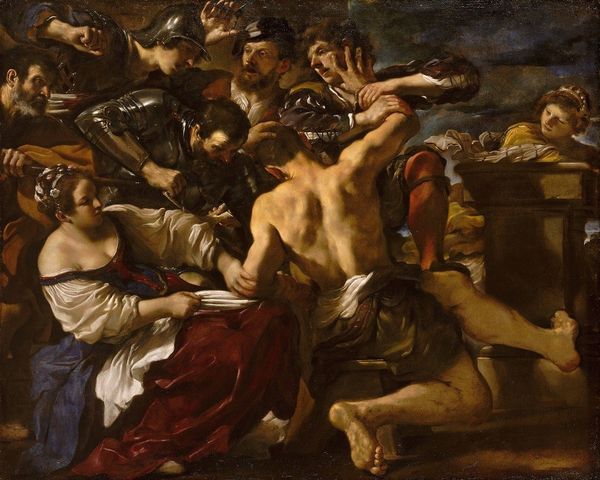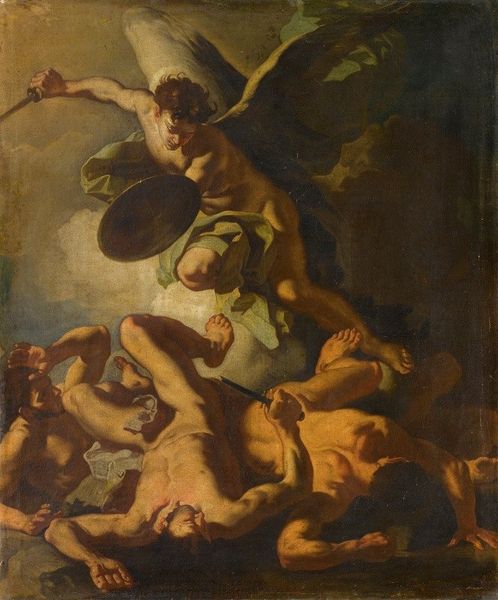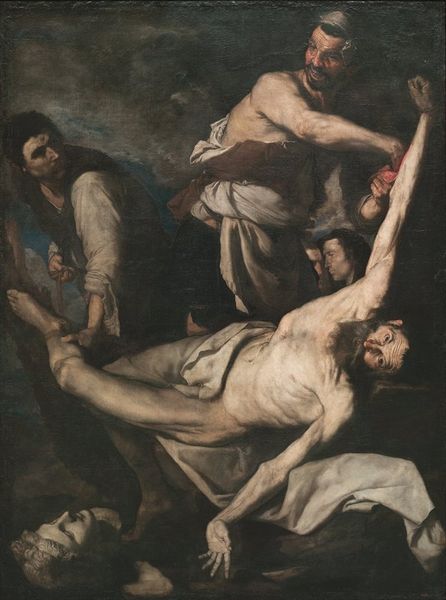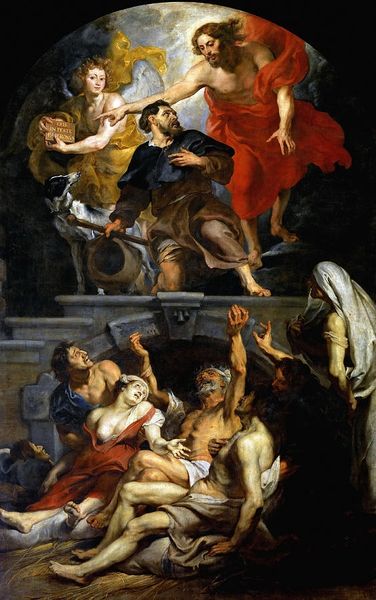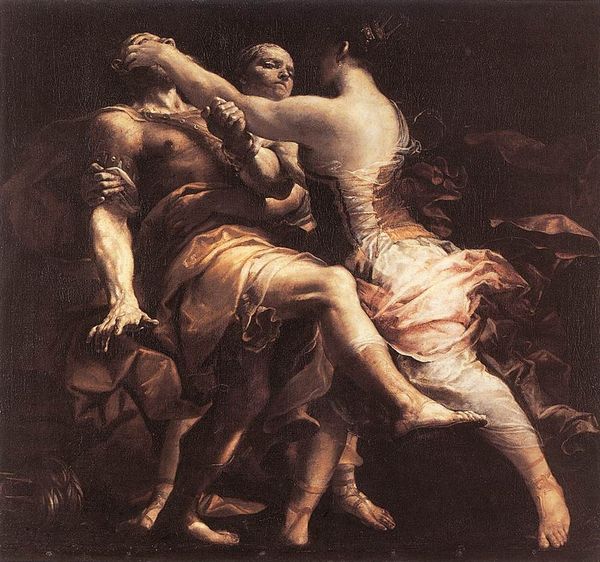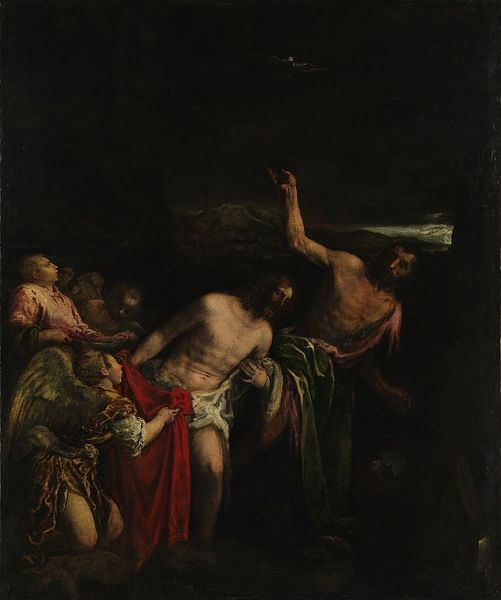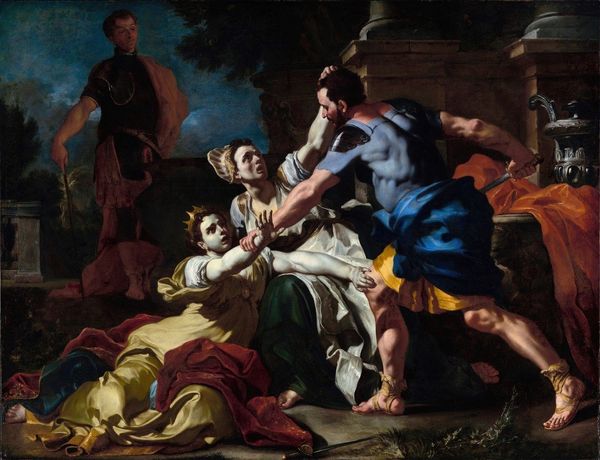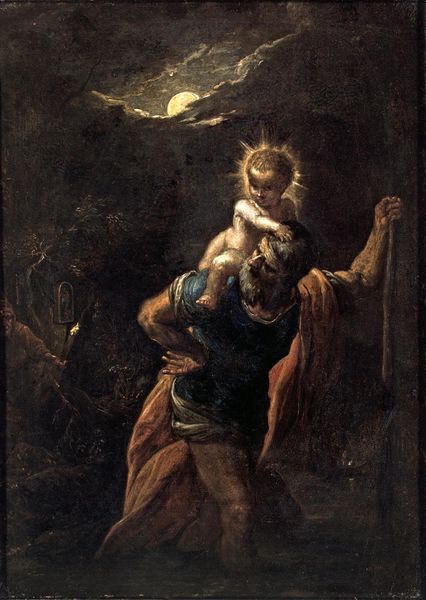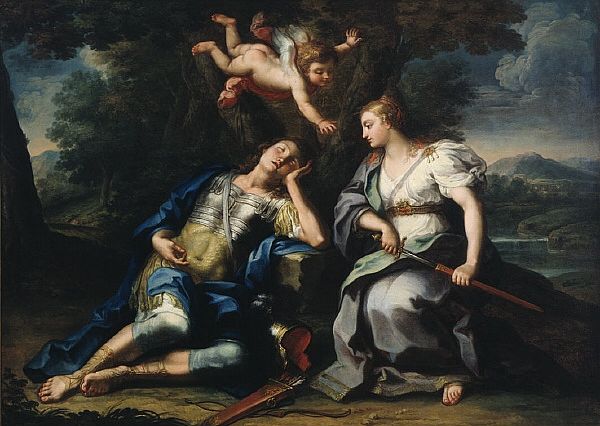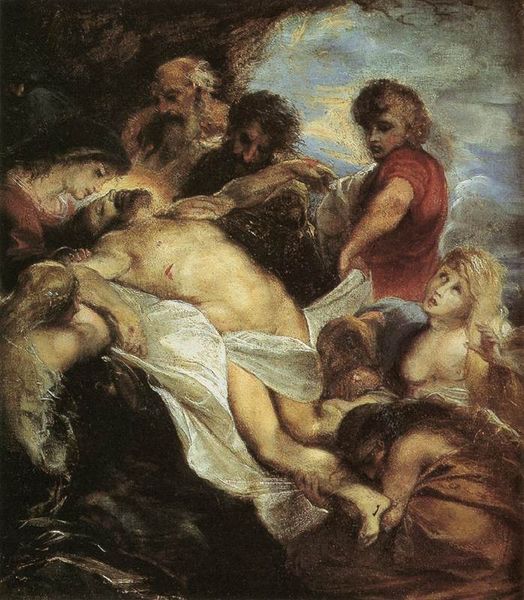
oil-paint
#
baroque
#
oil-paint
#
figuration
#
oil painting
#
history-painting
Copyright: Public domain
Giuseppe Maria Crespi created "The Sacrifice of Abraham" in Italy, although the exact date is not known. In this work, Crespi presents a key moment from the Old Testament, exploring themes of faith and divine intervention. Painted during a period of shifting artistic and religious sentiments, Crespi’s interpretation reflects the cultural milieu of his time. The dramatic lighting, the emotional intensity of the figures, and the dynamic composition all speak to the influence of Baroque ideals, but the question remains: what is Crespi's public role through this piece? The figures are rendered with a naturalism that heightens the emotional impact of the scene. Is this perhaps, a challenge to the institutionalized church of the time? To fully grasp the painting's significance, we can use the study of theological texts and the history of religious art in 18th-century Italy to provide additional insights. As viewers, we must acknowledge the complex interplay between artistic expression, religious doctrine, and institutional power to understand this profound work.
Comments
No comments
Be the first to comment and join the conversation on the ultimate creative platform.
